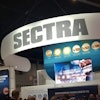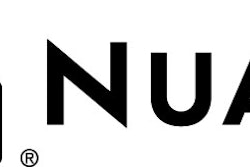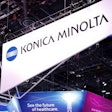The use of teleradiology can improve the timeliness of preliminary written reports for off-hours pulmonary CT angiography (CTA) studies, according to an article published in the March issue of the Journal of the American College of Radiology.
"By establishing agreed-on time standards for reporting such examinations, radiologists and clinicians can collaborate to ensure prompt diagnosis and treatment of potentially lethal illnesses, such as [pulmonary embolism (PE)]," wrote a research team led by Dr. Scott Kennedy of Yale School of Medicine in New Haven, CT.
Seeking to evaluate how a teleradiology service would affect interpretation time for pulmonary CTA studies, the researchers first surveyed 31 emergency medicine attending physicians at Yale-New Haven Hospital and 75 radiology administrators of academic radiology departments to develop achievable goals for interpreting these studies (JACR, March 2009, Vol. 6:3, pp. 180-189).
From the survey, the authors found that radiology chairs determined that the median optimal preliminary written interpretation time for these studies was 60 minutes, compared with 20 minutes for emergency medicine physicians. Emergency medicine physicians also reported that 40 minutes was an acceptable limit for interpretation time.
The researchers then retrospectively compared the percentage of studies for preliminary written reports within these thresholds for 485 pulmonary CTA studies between May 2006 and July 2006 (prior to implementation of teleradiology) and 617 studies completed three months afterward (from January 2007 to March 2007). The study group also evaluated a total of 1,638 brain CT studies over the same time periods for comparison purposes.
The off-hours teleradiology service utilized a staff radiologist at an offsite but local location, providing a written interpretation of any requested inpatient imaging study performed between 6 p.m. and 12 a.m. on weekdays and 2 p.m. and 7 p.m. on weekends. The offsite radiologist had access to the same Imagecast RIS (GE Healthcare, Chalfont St. Giles, U.K.), PowerScribe speech recognition software (Nuance Communications, Burlington, MA), and Synapse PACS (Fujifilm Medical Systems USA, Stamford, CT) used at the hospital.
After adoption of teleradiology, the researchers found that the percentage of studies interpreted within the 60-minute limit climbed from 51% to 62%, a statistically significant improvement (p < 0.01). The 40-minute acceptable time period also saw an increase in interpreted studies, climbing from 34% to 43% (p < 0.01).
Studies read within the 20-minute threshold climbed from 9% to 13%, also a statistically significant improvement (p < 0.05). There were no statistically significant improvements found in brain CT studies, however.
"Admittedly, the improvements were not as substantial as one would hope. The small size of the improvements was probably partly because the teleradiology service covered only 40 hours per week (six hours per weekday and five hours per weekend day) out of a possible 168 hours, or 23.8% of the time," the authors surmised. "In addition, the process improvement occurred from an already improved time to interpretation established with the introduction of a departmental time standard and heightened staff awareness of the time sensitivity of PE studies."
Despite the relatively small improvements, however, the authors said their results suggest that adding a teleradiology service can have a statistically significant impact on meeting certain quality standards.
"In the case of PE, for which death can occur within one to two hours without treatment, even a marginal improvement can have a profound effect on survival," the authors wrote.
By Erik L. Ridley
AuntMinnie.com staff writer
March 23, 2009
Related Reading
Wiki boosts management of radiology IT knowledge, February 19, 2009
Building a Better PACS: Part 1 -- Making it work for end users, February 2, 2009
Telerad practice integrates faxed patient records with images, November 12, 2008
PACS gateway for outside studies speeds trauma treatment, November 3, 2008
Software boosts delivery of critical results, July 17, 2008
Copyright © 2009 AuntMinnie.com




















